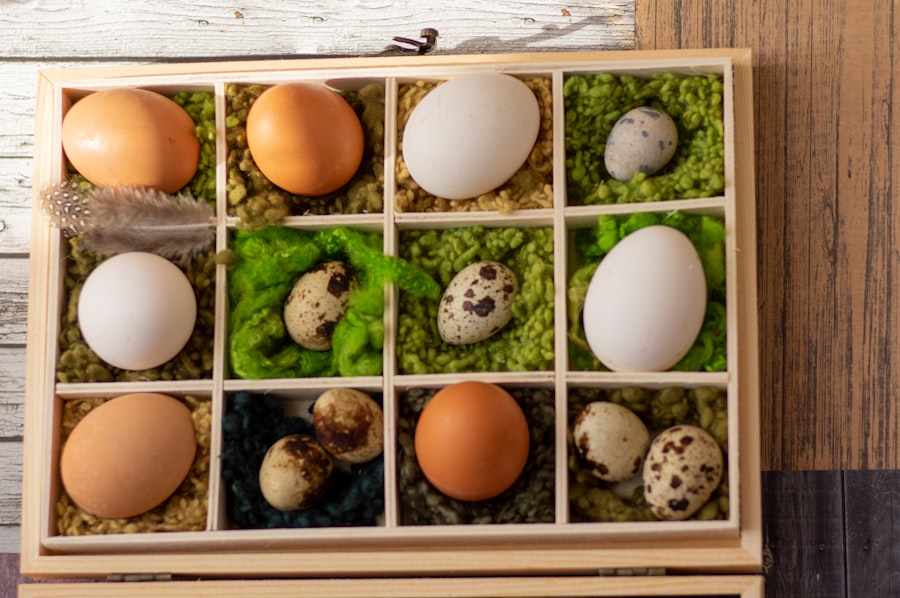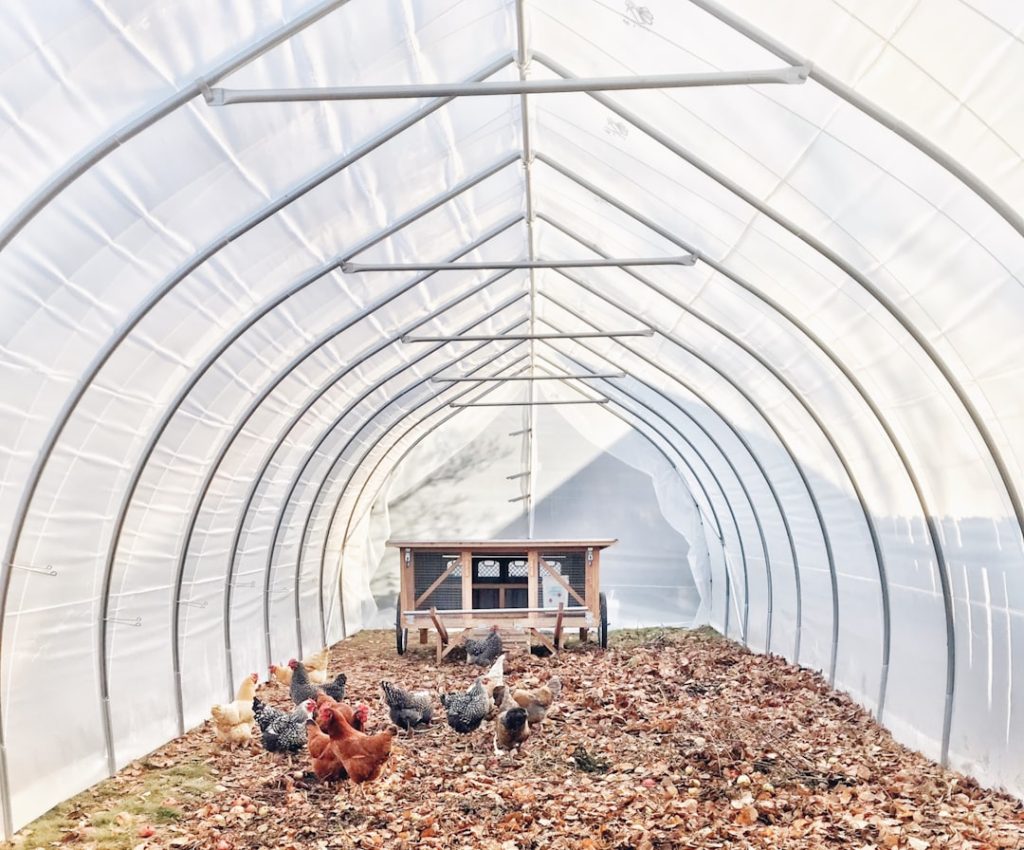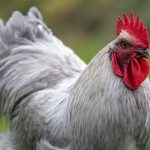Chickens exhibit innate curiosity and high activity levels. They possess strong instincts for foraging, environmental exploration, and roosting at elevated locations. Comprehending these natural behaviors is essential for effectively confining chickens within designated areas.
By recognizing their instinctual drives, caretakers can anticipate chicken behavior and implement preventive measures against escape attempts. As social creatures, chickens flourish in flock settings. They establish a hierarchical pecking order and claim territories within their living spaces.
This territorial behavior may occasionally result in escape attempts, as chickens seek to explore new areas or assert dominance. Understanding these social dynamics enables caretakers to create environments that fulfill the chickens’ social requirements and minimize the likelihood of escape attempts. Ultimately, a thorough understanding of chicken behavior is crucial for establishing a secure and nurturing environment in which these birds can thrive.
Table of Contents
- 1 Clipping the wings of your chickens
- 2 Providing a secure and enclosed coop
- 3 Adding netting or fencing to the top of your chicken run
- 4 Training your chickens to stay within their designated area
- 5 Providing plenty of enrichment and activities within the coop
- 6 Regularly checking for and repairing any potential escape routes
- 7 FAQs
- 7.1 What are some methods to keep chickens from flying out of their enclosure?
- 7.2 Is it safe to clip a chicken’s flight feathers?
- 7.3 What are the benefits of using netting or wire to cover the top of a chicken enclosure?
- 7.4 How can providing enough space and enrichment discourage chickens from wanting to fly out?
Key Takeaways
- Chickens are natural foragers and will roam and scratch for food
- Clipping the wings of chickens can prevent them from flying over fences
- A secure and enclosed coop is essential to protect chickens from predators
- Adding netting or fencing to the top of the chicken run can prevent them from flying out
- Training chickens to stay within their designated area can be done using positive reinforcement and treats
Clipping the wings of your chickens
How Wing Clipping Works
One effective method for preventing chickens from flying over fences or enclosures is to clip their wings. This involves trimming the primary feathers on one wing to reduce their ability to achieve lift and fly long distances. It’s important to note that wing clipping should be done carefully and with proper guidance to avoid causing any harm to the chicken.
Benefits of Wing Clipping
When done correctly, wing clipping is a safe and humane way to limit a chicken’s ability to escape. Another benefit of wing clipping is that it can help prevent injuries that may occur from flying into objects or getting caught in fences. By reducing their flight capabilities, you can minimize the risk of accidents and keep your chickens safe within their designated area.
Maintenance and Care
It’s important to regularly check and maintain the wing clipping as feathers grow back over time. This ensures that the chickens remain safe and contained within their coop and run.
A Practical Solution
Overall, wing clipping is a practical and effective method for keeping chickens contained within their coop and run. By following proper wing clipping techniques and maintaining regular checks, you can enjoy the benefits of raising healthy and happy chickens.
Providing a secure and enclosed coop

Creating a secure and enclosed coop is essential for preventing chickens from escaping. The coop should be constructed with sturdy materials and have no gaps or openings that chickens could squeeze through. It’s important to regularly inspect the coop for any signs of wear or damage that could compromise its security.
Additionally, providing adequate roosting space and nesting boxes within the coop can help fulfill the chickens’ natural instincts and reduce their desire to escape in search of alternative roosting spots. Furthermore, ensuring that the coop is predator-proof is crucial for the safety of the chickens. Predators such as foxes, raccoons, and birds of prey pose a significant threat to free-ranging chickens.
By fortifying the coop with secure locks, heavy-duty wire mesh, and predator-proof flooring, you can minimize the risk of predators gaining access to the chickens. Overall, providing a secure and enclosed coop is fundamental for keeping chickens safe and contained within their designated area.
Adding netting or fencing to the top of your chicken run
To further secure the chicken run and prevent escape, adding netting or fencing to the top of the enclosure is a practical solution. This extra layer of protection can prevent chickens from flying over the top of the run or being targeted by aerial predators. When choosing netting or fencing material, it’s important to select options that are durable, weather-resistant, and able to withstand the weight of potential predators.
Additionally, ensuring that the netting or fencing is securely fastened to the top of the run is crucial for its effectiveness. Regular inspections should be conducted to check for any signs of wear or damage that could compromise its ability to contain the chickens. By adding netting or fencing to the top of the chicken run, you can create a secure barrier that minimizes the risk of escape and protects the chickens from potential threats.
Training your chickens to stay within their designated area
Training your chickens to stay within their designated area can be achieved through positive reinforcement and consistent boundaries. By providing regular access to food, water, and shelter within the designated area, you can encourage the chickens to remain within the confines of their coop and run. Additionally, using treats and rewards to reinforce desirable behavior can help establish boundaries and discourage escape attempts.
Another effective method for training chickens is to use visual barriers such as plants or obstacles to create a clear boundary between their designated area and other parts of the property. By creating a distinct visual barrier, you can help guide the chickens to stay within their designated space. It’s important to be patient and consistent with training efforts, as it may take time for the chickens to learn and adapt to their boundaries.
Overall, training your chickens to stay within their designated area is a proactive approach to preventing escape and promoting safety.
Providing plenty of enrichment and activities within the coop

Reducing Escape Attempts through Enrichment
Providing plenty of enrichment and activities within the coop can help reduce the likelihood of escape attempts by keeping the chickens engaged and stimulated. This can include providing perches, dust baths, hanging treats, and toys that encourage natural behaviors such as pecking, scratching, and exploring. By offering a variety of enrichment options, you can help fulfill the chickens’ natural instincts and reduce their desire to escape in search of stimulation.
Preventing Boredom and Keeping Chickens Engaged
Furthermore, rotating enrichment items regularly can prevent boredom and keep the chickens engaged in their environment. This can include introducing new items, rearranging existing structures, or providing opportunities for foraging within the coop. By keeping the environment dynamic and engaging, you can help prevent escape attempts by ensuring that the chickens are content and fulfilled within their designated area.
Promoting Mental and Physical Well-being
Overall, providing plenty of enrichment and activities within the coop is essential for promoting mental and physical well-being while reducing the risk of escape.
Regularly checking for and repairing any potential escape routes
Regularly checking for and repairing any potential escape routes is crucial for maintaining a secure environment for your chickens. This includes inspecting fences, gates, netting, and any other barriers for signs of wear, damage, or potential weak spots that could allow for escape. It’s important to address any issues promptly to prevent them from escalating into larger problems that could compromise the containment of the chickens.
Additionally, monitoring the surrounding area for potential entry points or vulnerabilities that could allow predators access to the chickens is essential for their safety. By regularly assessing the security of the coop and run, you can identify and address any potential escape routes or security risks before they become a threat. Overall, regularly checking for and repairing any potential escape routes is a proactive measure that helps ensure the safety and containment of your chickens.
If you’re looking for tips on how to keep chickens from flying out of their coop, you may also be interested in learning about what to feed ducks. Check out this article for helpful information on providing the right nutrition for your ducks.
FAQs
What are some methods to keep chickens from flying out of their enclosure?
Some methods to keep chickens from flying out of their enclosure include clipping their flight feathers, using netting or wire to cover the top of the enclosure, and providing enough space and enrichment to discourage them from wanting to fly out.
Is it safe to clip a chicken’s flight feathers?
Yes, it is safe to clip a chicken’s flight feathers if done properly. It is a painless procedure that involves trimming the primary feathers on one wing to prevent the chicken from achieving lift when it tries to fly.
What are the benefits of using netting or wire to cover the top of a chicken enclosure?
Using netting or wire to cover the top of a chicken enclosure can prevent chickens from flying out while still allowing them to have access to fresh air and sunlight. It also provides protection from predators and keeps the chickens safe within their designated area.
How can providing enough space and enrichment discourage chickens from wanting to fly out?
Chickens are more likely to try to fly out of their enclosure if they feel cramped or bored. By providing enough space for them to roam and explore, as well as enrichment such as perches, dust baths, and toys, chickens are less likely to feel the need to escape their enclosure.
Meet Walter, the feathered-friend fanatic of Florida! Nestled in the sunshine state, Walter struts through life with his feathered companions, clucking his way to happiness. With a coop that’s fancier than a five-star hotel, he’s the Don Juan of the chicken world. When he’s not teaching his hens to do the cha-cha, you’ll find him in a heated debate with his prized rooster, Sir Clucks-a-Lot. Walter’s poultry passion is no yolk; he’s the sunny-side-up guy you never knew you needed in your flock of friends!







